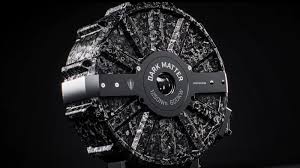
Breaking News
 RFK JR, HHS, ALIGN WITH PARENTAL CONSENT
RFK JR, HHS, ALIGN WITH PARENTAL CONSENT
 "Blackouts Coming!" Glenn Beck & Trump Admin Issue DIRE Warning… It's Already Begun!
"Blackouts Coming!" Glenn Beck & Trump Admin Issue DIRE Warning… It's Already Begun!
 Paypal Seeks Approval to Launch Paypal Bank as Lending, Deposits, and Capital Control Tighten
Paypal Seeks Approval to Launch Paypal Bank as Lending, Deposits, and Capital Control Tighten
 Saylor Buys Nearly $1B Worth of Bitcoin, Then It Plunges 4%
Saylor Buys Nearly $1B Worth of Bitcoin, Then It Plunges 4%
Top Tech News
 This tiny dev board is packed with features for ambitious makers
This tiny dev board is packed with features for ambitious makers
 Scientists Discover Gel to Regrow Tooth Enamel
Scientists Discover Gel to Regrow Tooth Enamel
 Vitamin C and Dandelion Root Killing Cancer Cells -- as Former CDC Director Calls for COVID-19...
Vitamin C and Dandelion Root Killing Cancer Cells -- as Former CDC Director Calls for COVID-19...
 Galactic Brain: US firm plans space-based data centers, power grid to challenge China
Galactic Brain: US firm plans space-based data centers, power grid to challenge China
 A microbial cleanup for glyphosate just earned a patent. Here's why that matters
A microbial cleanup for glyphosate just earned a patent. Here's why that matters
 Japan Breaks Internet Speed Record with 5 Million Times Faster Data Transfer
Japan Breaks Internet Speed Record with 5 Million Times Faster Data Transfer
 Advanced Propulsion Resources Part 1 of 2
Advanced Propulsion Resources Part 1 of 2
 PulsarFusion a forward-thinking UK aerospace company, is pushing the boundaries of space travel...
PulsarFusion a forward-thinking UK aerospace company, is pushing the boundaries of space travel...
 Dinky little laser box throws big-screen entertainment from inches away
Dinky little laser box throws big-screen entertainment from inches away
 'World's first' sodium-ion flashlight shines bright even at -40 ºF
'World's first' sodium-ion flashlight shines bright even at -40 ºF
Dark Matter: An 86-lb, 800-hp EV motor by Koenigsegg

Earlier this year, we talked about Koenigsegg's Light Speed Tourbillon Transmission (LSTT). We explored how it couples the 5-liter, 1,500 horsepower (1,119 kW), 1,106 lb-ft (1,500 Nm) of torque, "Hot V8" engine shoed into the rear of the Gemera hypercar and the 850-volt Dark Matter electric motor mounted in the front – but we never got into the specifics of this insane electric powerplant and what makes it so remarkable.
Unveiled in 2023 and stuffed into the Koenigsegg Gemera, the Dark Matter motor created an entirely new league of high-performance electric motor that didn't quite exist before. Most of its details are still hidden away in a secret Koenigsegg vault while awaiting patent protection.
The Dark Matter weighs a mere 86 lb (39 kg) and delivers 800 hp (600 kW) with 922 lb-ft of face-melting torque (1,250 Nm) and a max rev of 8,500 RPM.
The entire unit is about 15.1 inches in diameter and 5.3 inches thick (383.3 mm by 135.5 mm). That's not a typo. It's only slightly bigger than a Roomba by an inch and a half (3.8 cm), but with enough power to send the Roomba into low Earth orbit (not really, but it sure seems like it).
The trick to this ridiculous EV motor is a "little bit" of carbon fiber and a six-phase "raxial flux" design – a fusion of radial and axial flux principles used in electric motors, and a word Koenigsegg coined that didn't even exist in automotive terms before.
The radial flux design isn't just the most common type of EV motor, it's in nearly everything that uses an electric motor. From a drill to an RC car. The shape of the motor is often long with a relatively smallish diameter. The rotor – with its magnetic flux lines pointing outward from the axle – spins inside the housing at high RPM. It's the design you'll find in a Tesla Plaid – Tesla's fastest and most powerful offering. A single Plaid motor makes about half as much horsepower and weighs roughly 20 lb (9 kg) less than the Dark Matter (though the Plaid comes equipped with three of them).
Axial flux, on the other hand, tends to have a much larger diameter, shaped more like a pancake. The magnet forces are parallel to the axle, making them rev slower but produce more torque.
Koenigsegg has incorporated both radial and axial flux into the Dark Matter.
"Mostly axial, with a bit of radial flux," Christian von Koenigsegg told MotorTrend. Meaning that most of the power from Dark Matter is produced with the axial flux aspect of the motor, with the radial part just chipping in a little extra.
You may have read "a little bit of carbon fiber" above, but in reality, nearly the entire motor is made of the material, including its rotor and stator structures. Instead of stacks of laminated steel plates holding everything together as with traditional motor design, Koenigsegg is the first to use carbon fiber structures. Pricey, indeed, but we're talking Koenigsegg here, where its most "economically priced" car, the Gemera, is US$1.7 million.



